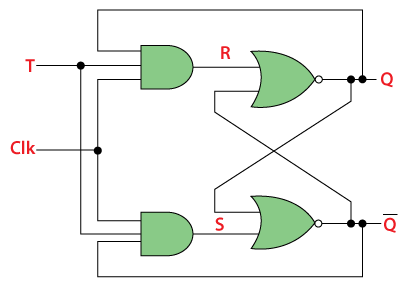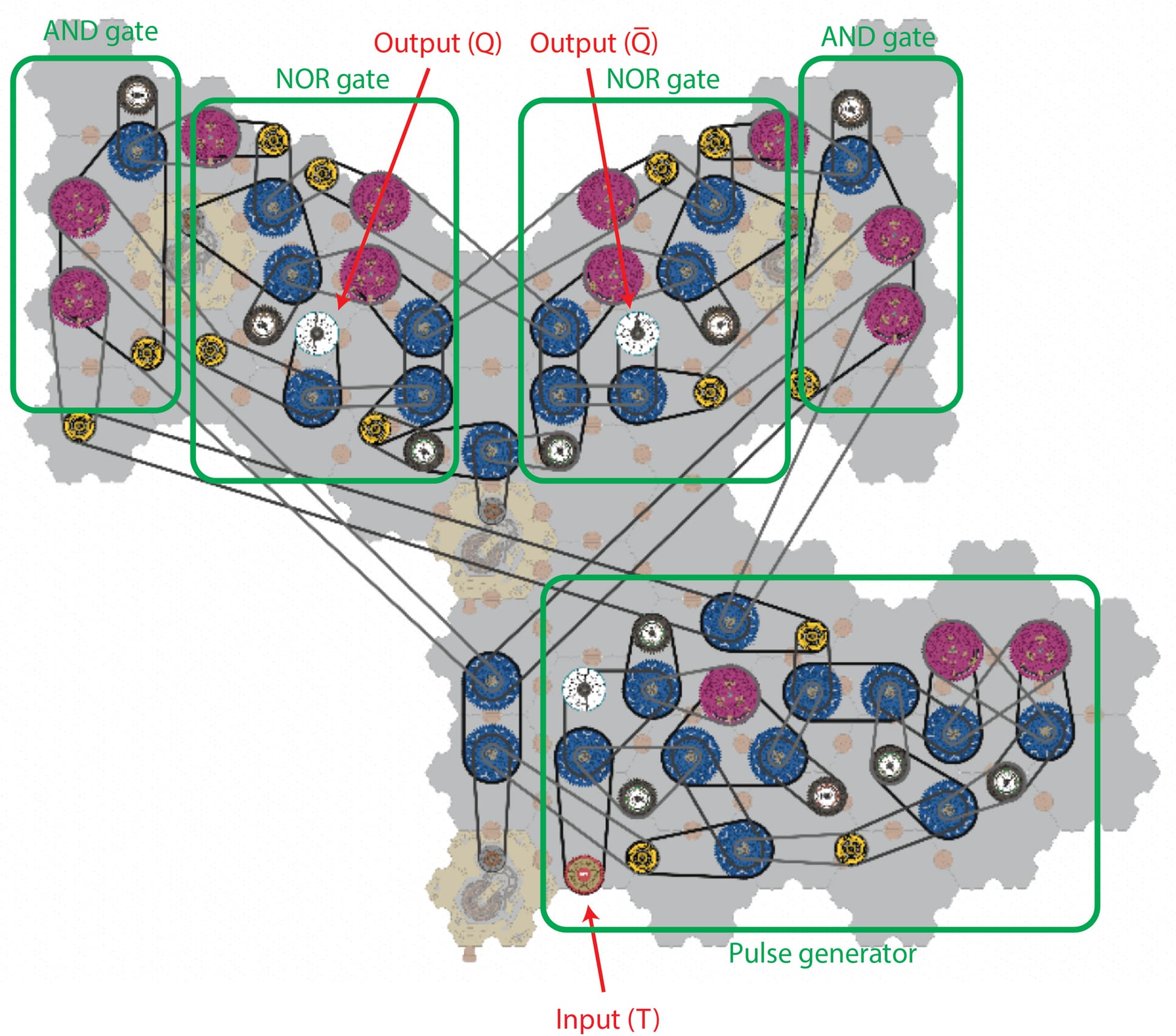Can you design a simple spintronic T flip-flop using only 3 transistors? T flip-flops are a type of flip-flop that toggle the output every time there is a rising edge on the input pin.
They’re used, for example, in quartz oscillator watches. If you string a series of them together, you can bring the 32,768 Hz frequency of the crystal down to a 1 Hz frequency to run the second hand. The first T flip-flop brings it down by half, to 16,384 Hz. The second T flip-flop brings it down to 8,192 Hz. The third T flip-flop brings it down to 4,096 Hz, and so on, until you get to 1 Hz. There’s a cool video on this particular use of T flip-flops here.
This is pretty tricky. I tried it myself, using a direct implementation of this logic diagram:

(image from T Flip Flop in Digital Electronics - Javatpoint)
It’s not even close to the most efficient way to build it. Here’s what it ended up looking like:

And here’s a link to the simulated circuit. It has pretty poor performance as well. It takes a looong time to switch back and forth. There’s GOT to be a simpler, better way to build it, and I think it can probably be done with only 3 transistors (possibly even two). Here’s a link to a circuit diagram that uses three.
Note that you won’t be able to directly translate that circuit to spintronics. Spintronic transistors behave differently than the “bipolar junction” type transistors (BJTs) in the circuit diagram. They’re more like “field effect” transistors (FETs).
Can you build a circuit that behaves like a T flip-flop using only 3 transistors?